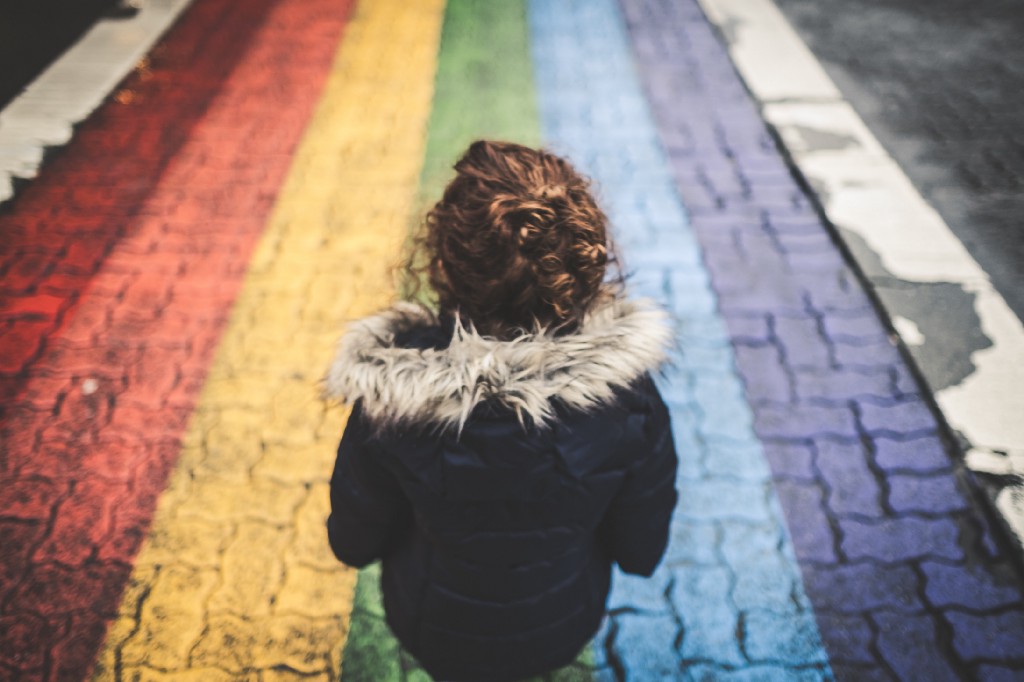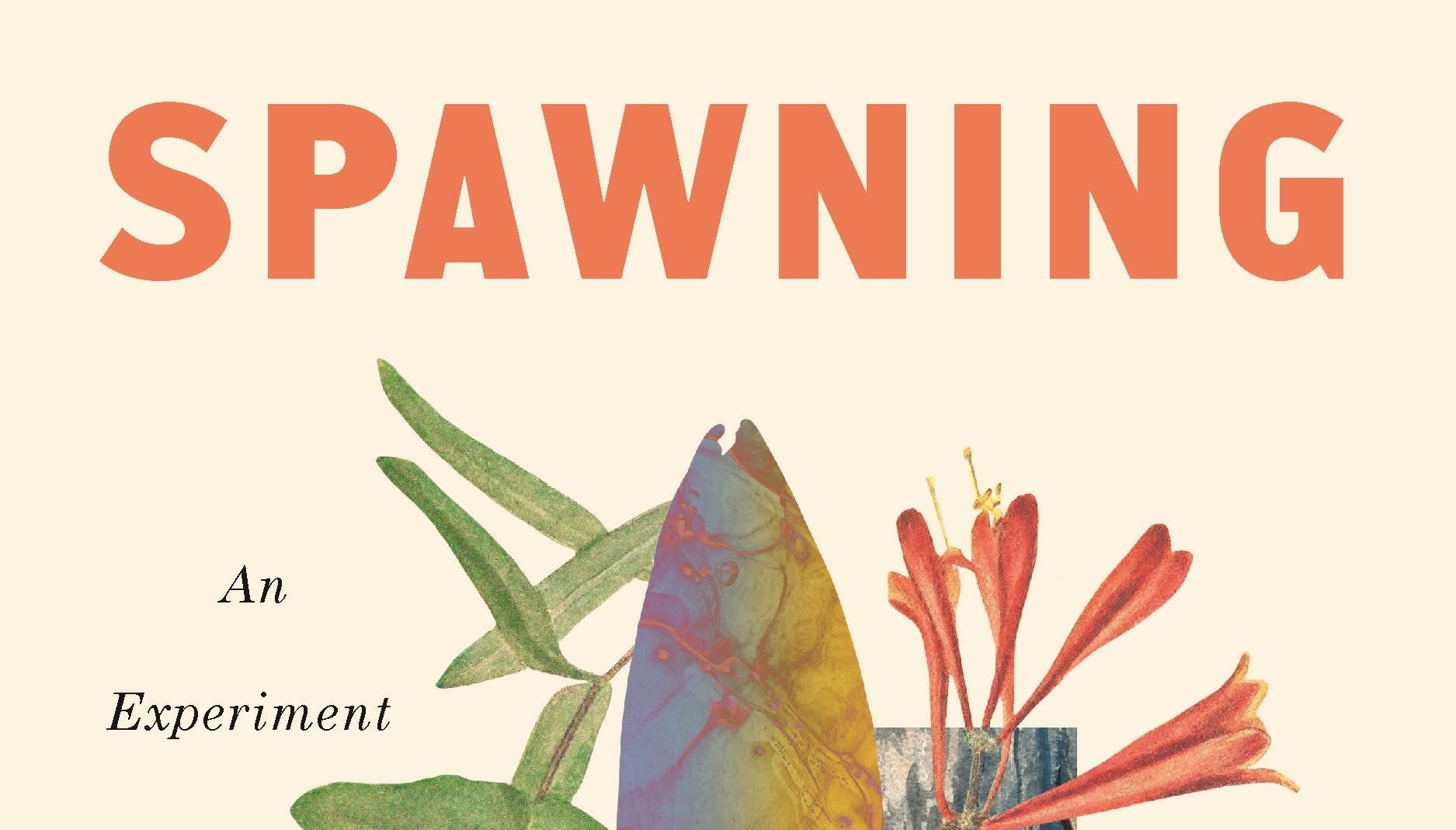Books & Culture
Chelsey Johnson’s ‘Stray City’ Deals with Queer Reality, Not Queer Theory
As a queer woman who sometimes has relationships with men, I appreciated seeing my experience on the page

When I moved to Virginia to begin my MFA, I had a girlfriend as handsome as a star. She held my hand at the kickoff barbecue and accompanied me to the welcome drinks gathering, but after an appropriate amount of strife and struggle, we split up. When I eventually brought around a new beau, one of the guys in my program wiggled his eyebrows. Yes? “He’s a man,” this guy sputtered. And? “I thought you were a, you know,” he said, tugging at his collar button, “gay.”
I understood his confusion, yet it was not the confusion that struck me so much as the other feelings: the fear, the animus. That guy in my program regarded my “new guy” with suspicion, touching only the tips of his fingers when he offered a handshake, as if he were a bomb that might detonate. My queer friends felt betrayed by this new development and stopped inviting me to queer events, queer organizing meetings. My new boyfriend was much more of an activist than my old girlfriend had been, but this didn’t matter. One friend could only say his name in a rush, pushing it up against other words in case it was contagious. It came from me too, don’t get me wrong — this recalibration messed with my identity. I had been straight, then gay, then bi, then queer, and now I was going to date a guy again? Was I real? Did I still belong to the outsiders who had made me?

Into this space comes Chelsey Johnson’s much-anticipated debut novel Stray City, which tells the story of a lesbian-identified woman named Andrea who suddenly finds herself involved in a sexual gray zone with a man and with the idea of being a mother. This ambivalence, between Andrea’s commitment to wanting the things a “good lesbian” should want and the things she finds she wants, is in many ways the engine of the book. What happens, Johnson asks us, when doing the politically liberating thing is at odds with your body’s actual desires?
The context of Stray City is essential: it is in many ways the story of how the loose queer communities we move in now worked when they were at their tightest. The book’s first two parts unfold in pre-gentrified Portland, during the years 1998–1999, when, as Johnson puts it, “queer survival was still not guaranteed.” Matthew Shepard had just been beaten and left to die on that Montana fence, and the film Boys Don’t Cry, chronicling the murder of Brandon Teena in Nebraska, had just been released. Johnson’s protagonist is herself from Nebraska. “And in all the miles and miles of green fields stretching toward the horizon as far as I could see from the end of our driveway, there was not a single place for that feeling to exist, except inside me,” writes Johnson, in some of the loveliest and most complex writing about rural queer awareness I’ve yet read.
What happens, Johnson asks us, when doing the politically liberating thing is at odds with your body’s actual desires?
For this queer woman reader, to see characters like me and my friends rendered with an expert — and insider — hand is pure pleasure; you’ve never seen the fierce loyalty and tenderness and humor that is the very lifeblood of a queer ecosystem depicted quite like this. Andrea is soon enveloped by the vibrant community of queers and punks and musicians that made up Portland life in the late ’90s, even finding her chosen family with a group of cool dykes known as the “Lesbian Mafia.” But the Lesbian Mafia has rules, it is its own kind of system. “It seemed in our urgency to redefine ourselves against the norm,” writes Johnson, “we’d formed a church of our own, as doctrinaire as any, and we too abhorred a heretic.”
Systems are made so we can break them. Andrea meets a cis man named Ryan one night, a gentle drummer with a philosophy of non-attachment. They kiss, they fuck; Andrea vows never to see him again, then does, and does again. Is she attracted to him? Doesn’t know. Does she love him? Can’t say.
“I asked myself, What was it like?” writes Johnson, after Andrea and Ryan share penis in vagina sex for the first time. “And I answered, Like sex…I closed my eyes and imagined a harness and a girl behind it, but this patch of fur around his navel kept rubbing against me, animal-like.” No matter how many ways Andrea tries to lean in or out of her connection to Ryan, she cannot quite seem to find purchase. They fuck again, and Andrea gets pregnant. At one point they engage in a passive aggressive karaoke battle to try to figure out who they are to each other. Lover? Friend? Their connection is perhaps best understood as a kind of fellow feeling or the tenderness that can flow, once or twice in a lifetime, between two artists.
Yet the world, as it tends to do, rises up to categorize. Andrea’s friends find out and kick her out of the Lesbian Mafia. Ryan wants her to be his girlfriend.
‘Call Me By Your Name‘ Finally Shows the Kind of Bisexual Narrative I Want to See
I didn’t stay with that guy in Virginia. Instead I went on to have several important relationships with women, but my most recent ex is a man. While my ideal partner is probably a non-cis man who presents masculine, there are at least twenty times more cis men on dating sites; add in the fact that I like weird books and it’s plain that the numbers are really against me. There was a moment with this most recent fellow when he looked at me in the light from his bare bulb and called me his girlfriend. I agreed. “But,” I said, “I’m still queer.” “If you’re with me now,” he wanted to know, “why does that matter?” “It matters,” I said, “because it’s who I am.” We didn’t last a year.
In Johnson’s book, it’s not clear how much Ryan needs to claim Andrea in some legible arrangement, but it’s clear he needs it a little bit, and that she fears this need in him as much as I feared it. “Why does it matter if people look at us and assume you’re straight?” that fellow asked me. I don’t know. It didn’t make sense. “It matters,” was all I could say, over and over again.
At its best, Stray City illuminates the ways that subjective experience and truth are always pressed up against objective systems of thought, particularly about marriage, family, and sexuality. In an interview, Johnson described the mainstream heteronormative imperative as the expectation “to pair up, marry, and reproduce.” Some queers decide to follow these instructions and others decide to resist them; Stray City shows us how these differences can create fault lines much deeper than the assigned sex of the partner you choose.
As a queer person open to dating people of any gender and as an artist not necessarily looking for a partner with whom to reproduce, I often feel less comfortable and less politically sympatico with married lesbians who have kids than I do with my straight single lady artist friends. It can be hard, even impossible, for queer people who love each other but who have made different choices about these systems to stay in loving community together.
It can be hard, even impossible, for queer people who love each other but who have made different choices about these systems to stay in loving community together.
These are uncomfortable truths that I wished Johnson’s novel had pushed on even more deeply. In Stray City, Andrea decides to keep the baby, and the perfect butch lover ultimately appears for her, completing the nuclear trio. Andrea’s best friend Meena, who resists being coupled or reproducing, at first rejects Andrea for her transgression into straight world but quickly takes her back without much struggle, and queer order is restored.
Perhaps what I’m really questioning here is the idea that any specifically queer family can provide me with shelter from the storm. As someone who is not queer in the “right” way, i..e the most stable and legible and politically helpful way, I’ve never had one that feels right, and the family that has sheltered me has been a broad coalition of queers yes, but also writers and straight people who live in the woods off the grid. I worry that Johnson’s notions of queer family are nostalgic or no longer possible, a notion left over from a time when we had fewer choices and that scarcity bound us together and bound us better.
Andrea decides to keep her baby in part so that it might become “one of those Portland kids who had always seen piercings and tattoos, who knew what a heroin addict looked like, what a gay person looked like, what a protest looked like.”
Though I grew up on the other coast, I was such a kid. Yet I feel just as confused and ambivalent about what makes a partnership as Andrea, and about what makes a body, and a sexuality. What, I would like to know, happens now?










